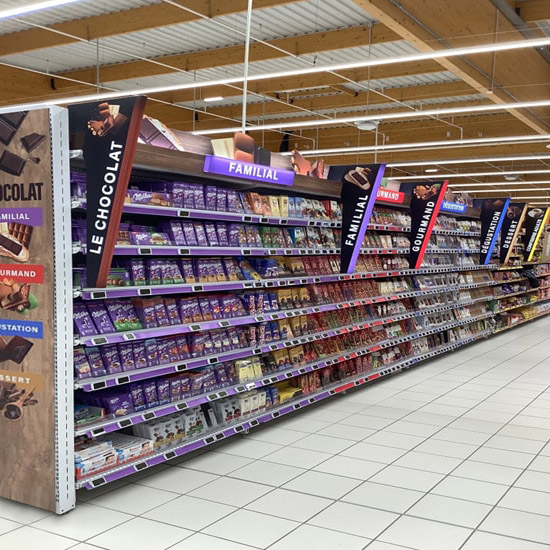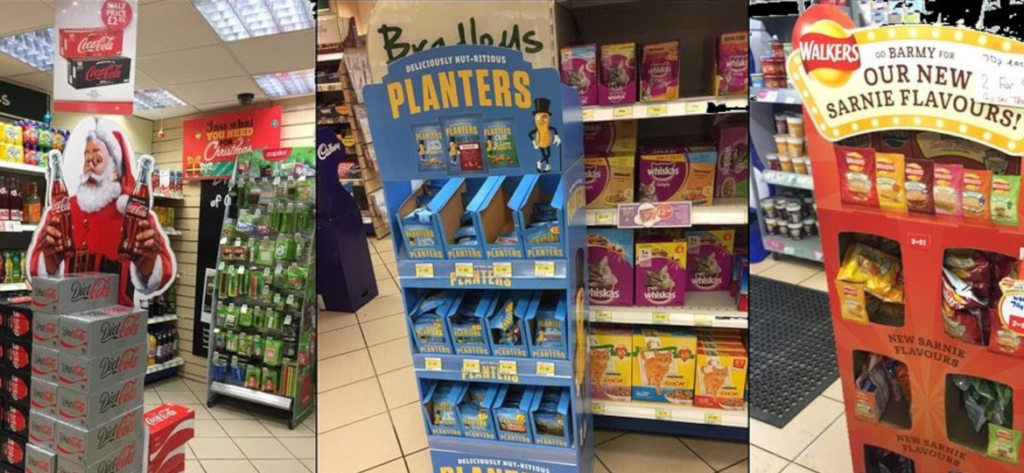In today’s highly competitive retail environment, capturing consumer attention is more challenging than ever. With countless products vying for attention on store shelves, having a well-optimized in-store display strategy is crucial for standing out and driving sales. A strategic approach to in-store displays not only enhances visibility but also creates an engaging shopping experience that can significantly impact purchasing decisions. Here’s how you can maximize your retail presence by optimizing your in-store display strategy.
The Importance of In-Store Displays
In-store displays are a powerful tool in the retail arsenal. They serve multiple purposes:
- Attract Attention: Well-designed displays can capture the attention of shoppers as they navigate the store, drawing them towards your products.
- Enhance Product Visibility: Strategic placement of displays can increase the visibility of your products, making them easier for customers to find.
- Drive Impulse Purchases: Eye-catching displays can encourage impulse purchases, especially when positioned near checkout areas or high-traffic zones.
- Communicate Brand Messaging: Displays offer an opportunity to convey your brand’s messaging, values, and product benefits, helping to build brand recognition and loyalty.
Key Strategies to Optimize Your In-Store Display

1. Understand Your Customer Journey
Before designing your displays, it’s crucial to understand the customer journey within the store. Identify key touchpoints where customers are most likely to engage with your products. Consider their path through the store, the time they spend in specific areas, and what influences their purchasing decisions. This understanding will help you place displays in locations where they will have the greatest impact.
2. Leverage Data and Analytics
Use data and analytics to inform your display strategy. Analyzing sales data, foot traffic patterns, and customer demographics can provide valuable insights into what works and what doesn’t. For example, if certain products tend to sell better when displayed at eye level, prioritize those placements. Data-driven decisions can lead to more effective displays and improved sales performance.
3. Focus on Visual Appeal
The visual design of your displays is critical in capturing customer attention. Consider the following elements:
- Color: Use bold, contrasting colors to make your display stand out. However, ensure that the colors align with your brand identity.
- Lighting: Proper lighting can highlight your products and make them more appealing. Use spotlighting or backlighting to draw attention to key items.
- Signage: Clear, concise signage helps communicate key messages quickly. Use signs to highlight promotions, product benefits, or brand values.
- Layout: The layout should be intuitive, making it easy for customers to interact with the products. Consider grouping related items together to encourage multiple purchases.
4. Update Displays Regularly
Keeping your displays fresh and relevant is essential for maintaining customer interest. Update your displays regularly to reflect seasonal themes, new product launches, or promotional events. This not only keeps your store looking vibrant but also encourages repeat visits from customers eager to see what’s new.
5. Incorporate Interactive Elements
Interactive displays can enhance the customer experience by allowing them to engage with your products in a meaningful way. This could include touch screens with product information, interactive product demos, or QR codes that link to online content. Interactive elements can make the shopping experience more memorable and increase the likelihood of a purchase.

6. Consider Cross-Merchandising
Cross-merchandising involves placing related products together to encourage additional purchases. For example, if you’re displaying pasta, consider placing a display of sauces, cheeses, and spices nearby. This strategy can increase the average transaction value by reminding customers of complementary items they might need.
7. Monitor and Adjust
An optimized display strategy requires continuous monitoring and adjustment. Track the performance of your displays using sales data and customer feedback. If a display isn’t generating the expected results, be prepared to make changes. Flexibility and responsiveness are key to maintaining an effective in-store presence.
Case Study: Coca-Cola’s “Share a Coke” Campaign
A well-known example of an effective in-store display strategy is Coca-Cola’s “Share a Coke” campaign. This campaign involved the personalization of Coca-Cola bottles with popular names and was supported by a robust in-store display strategy. Coca-Cola created prominent, eye-catching displays that featured the personalized bottles, often placing them at key points such as store entrances and high-traffic aisles.
Results:
- Increased Sales: The campaign led to a significant increase in sales, with many customers buying multiple bottles to find names of friends and family.
- Enhanced Brand Engagement: The personalized bottles and engaging displays encouraged customers to share their experiences on social media, further amplifying the campaign’s reach.
- Strengthened Brand Loyalty: The campaign fostered a personal connection between consumers and the brand, boosting customer loyalty and brand affinity.
Conclusion
Optimizing your in-store display strategy is essential for maximizing your retail presence and driving sales. By understanding the customer journey, leveraging data, focusing on visual appeal, and regularly updating your displays, you can create an engaging shopping experience that resonates with customers and encourages them to make purchases.
At GroupMCC, we specialize in helping brands enhance their retail presence with strategic in-store display solutions. Contact us today to learn how we can help you optimize your in-store displays and achieve your business goals.
